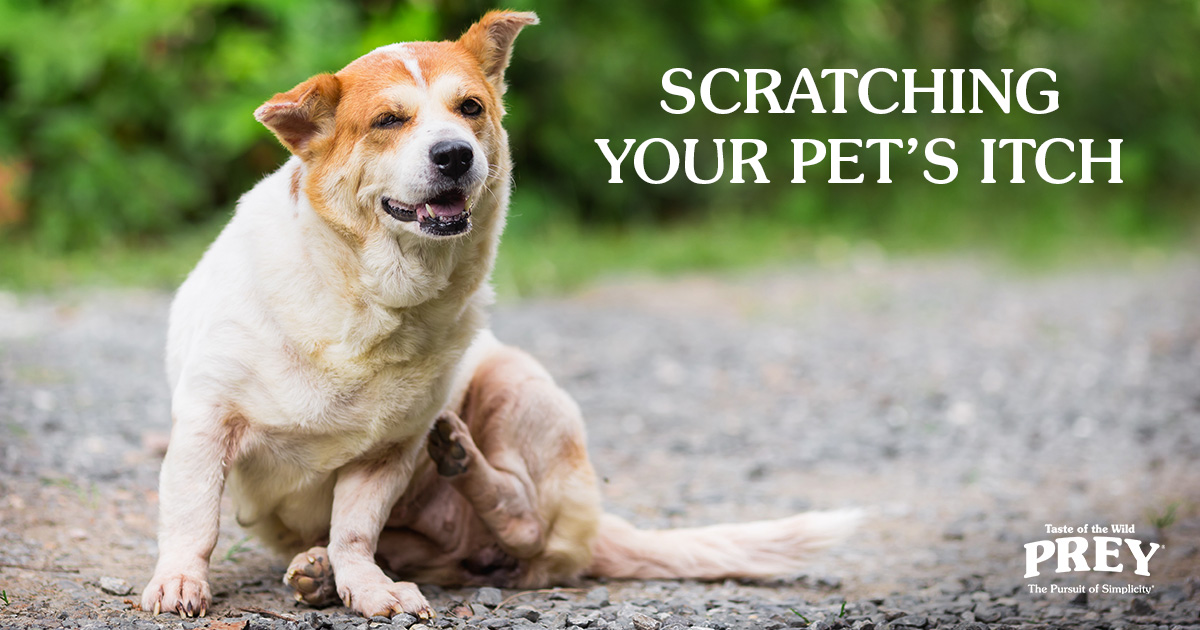
You’ve plied your pet with one delectable diet after another. But the itching, scratching, licking and gnawing at the skin continue. Despite your best efforts, your pet is still miserable — and now you are, too. How can you get this food allergy under control?
The Facts About Pet Allergies
Pets can have three different kinds of allergies, all of which can lead to paroxysms of itching in dogs and cats.
With a food allergy, the pet’s immune system identifies a protein in the food, such as chicken or pork, as a foreign invader and mounts an immune response against it. This often leads to itchy skin and, for a small percentage of pets, gastrointestinal signs like vomiting or diarrhea.
But food allergies are actually very uncommon in pets. Only 0.2 percent of dogs and 0.1 percent of cats suffer from food allergies, according to the Banfield Pet Hospital 2018 State of Pet Health Report, based on medical data from more than 3 million dogs and cats examined in 2017.
Allergies that are far more common in pets include flea allergies, in which pets mount a reaction to flea saliva and environmental allergies, or reactions to pollen, mold, dust mites and other irritants. In the last decade, there’s been a 12 percent increase in flea allergies in dogs and a 67 percent increase in cats, according to the Banfield report. At the same time, environmental allergies have jumped 30 percent in dogs and 11 percent in cats.
To complicate matters, pets can be allergic to more than one thing. Thirty percent of pets with food allergies, for example, have another type of allergy that impacts the skin. And some breeds, such as Labrador retrievers, golden retrievers and cocker spaniels, can be genetically predisposed to allergies.
Getting to the Root of the Problem
The best way to help your pet is to start with a visit to your veterinarian. He or she can provide your pet with medications to help relieve the itch while you work together to determine what’s causing it. Here are diagnostic steps your veterinarian may take:
- Check for fleas and mites. You don’t always see fleas on your pet, and mites can only be spotted with a microscope. Your veterinarian may recommend examining your pet with a flea comb, taking a skin scrape to view under the microscope or trying a flea treatment for at least three months. If the itching stops, you have a diagnosis and there’s no need to go further.
- Test for bacterial and fungal infections. Both of these can cause itching and usually respond to medications.
- Try a food elimination diet To check for a food allergy, your veterinarian may recommend an 8- to 12-week diet trial. While there’s technically no such thing as a hypoallergenic diet, a hydrolyzed diet, in which the proteins have been broken down into pieces small enough to avoid detection by the immune system, is as close as it comes.
During the trial, it’s important that your pet doesn’t eat anything else besides the assigned diet. That means no treats, rawhides or table scraps that might contain the offending protein. If your pet’s itching improves, then gets worse when your pet is fed the original diet, a diagnosis of food allergy is typically made. Your pet will need to stay on the recommended diet for the remainder of life.
- Consider environmental allergies, also known as atopic dermatitis. If your pet is still itching despite the special diet, it’s likely that he or she has environmental allergies. While pets with food allergies tend to itch all year long, those with environmental allergies often experience seasonal signs.
At this point, your veterinarian can submit a blood test to determine what, exactly, your pet is allergic to, or refer you to a veterinary dermatologist for the gold standard of allergy testing, a skin test. Based on the findings, special “allergy shots” can be developed to help your pet potentially overcome the allergy. Otherwise, there are several new medications that can help keep your pet more comfortable.
All of which goes to show that if your dog or cat is itching, there may be other things at play besides the pet food.
The information in this blog has been developed with our veterinarian and is designed to help educate pet parents. If you have questions or concerns about your pet's health or nutrition, please talk with your veterinarian.
